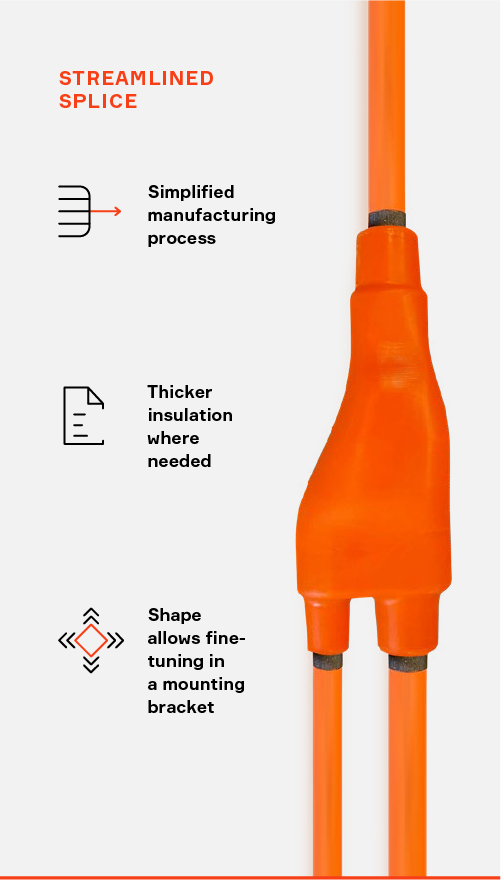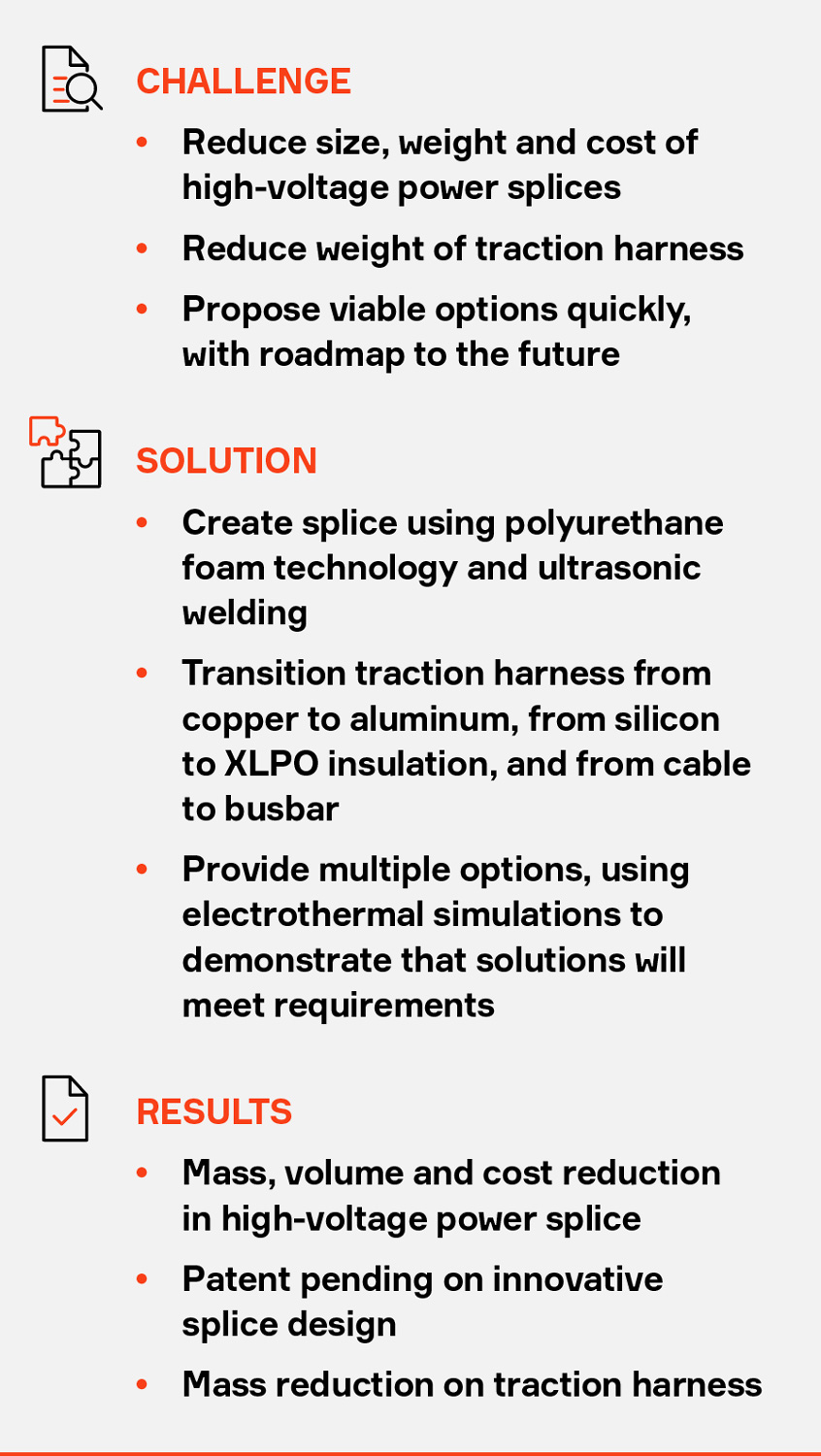Innovative Designs Trim Weight From High-Voltage Components
As OEMs refine the designs of their electric vehicles, they continue to look for ways to reduce weight to ensure that the EVs operate as efficiently as possible. Aptiv recently helped a major OEM use innovative technologies to quickly take weight out of two high-voltage components: a power splice, and the cables used in the traction harness and other battery connections.
Power splices split cables in a Y-configuration to provide power to two devices without adding a second circuit, thus saving space and reducing the weight and cost. A typical EV has two splices delivering power from the battery to the electric motors over high-voltage cables.
Because high-voltage cables have to be a larger gauge than low-voltage cables, the splices can also be bulky and hard to package. The OEM’s previous solution to create a splice used three cables welded to a common copper busbar using an expensive process. The challenge was to design a splice that was lighter, more streamlined and less expensive to produce.
A powerful splice
Aptiv proposed using an ultrasonic weld to hold the three cables directly together — eliminating the need for a heavy busbar — and encasing the splice with polyurethane foam (PUR) to seal it. Aptiv engineers then refined the design to use just enough PUR material to ensure the safety of the splice from an electrical and mechanical perspective. This approach reduced the weight by 20 percent and lowered the cost significantly. Performing the large weld required a new process to be developed.
A lighter approach
At the same time, Aptiv proposed a lighter and more robust solution for the traction harness and other cables. The previous solution had used copper cabling insulated with silicon. The first part of Aptiv’s solution was to switch the charging conductor from copper to aluminum, which reduced the weight of the conductor by 40 percent. Second, Aptiv proposed an optimized product design; the proposal moved from silicon insulation to cross-linked polyolefin (XLPO), which delivers performance at the temperatures that can be found in EVs, holds up well to abrasion over time and does not require 100 percent taping.
Looking ahead, Aptiv recommended transitioning the traction harness from aluminum cables to aluminum busbars. Because busbars are rigid, they require less packaging, such as brackets and cable channels, to hold them in place. The reduction in packaging, along with the improved heat dissipation of the busbar, brought the total weight savings to 50 percent.
Rapid Results
A key proof point for Aptiv’s proposals was its electrothermal simulation capability. With basic knowledge of the vehicle’s engine cycles, the simulation was able to quickly show that the proposed products would meet the OEM’s requirements for heat tolerance. Later, Aptiv confirmed those projections in lab tests.
Importantly, Aptiv engineers were able to provide these design options — including functional hardware — to the OEM for consideration in just six weeks. Because the splice design was a unique solution that had never been created before, Aptiv claimed a patent on it.
Aptiv will continue to help OEMs innovate with speed, delivering robust and creative solutions to solve their greatest challenges, particularly as they build out their EV offerings.

